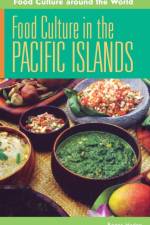von Roger Haden
78,00 €
The food culture of the Pacific Islands has been determined by isolation from the rest of the world. Original immigrants from Asia brought their foods, animals, and culinary skills with them, then for several thousand years, they were largely uninfluenced by outsiders. The tropical climate of much of the region, unique island geology and environmental factors also played a role in the evolution of islander cuisine, which is based on unique ingredients. The staples of breadfruit, yams, taro, coconut, sweet potato, and cassava are incorporated into a cuisine that uses cooking and preservation techniques unique to Polynesia, Micronesia, and Melanesia. Today, food culture in the Pacific is largely one of extremes. Although traditional foods and cookery survive and are highly valued, Westernization has meant that the overall diet of islanders has been negatively transformed and that islands are net importers of unhealthful foods. Ironically, the tourism industry has re-engaged islander people in food production and boosted their sense of identity. Students, food mavens, and travellers will find this to be a stellar introduction to the current culture of the Pacific Islands, with discussion of Hawaii, Australia, and New Zealand included. Chapter 1, Historical Overview, offers a fascinating chronicle of the evolution of a food culture of extremes, of isolation, climate, environment, and Western influences. Chapter 2, Major Foods and Ingredients, introduces a host of traditional tropical manna as well as imported products. The Cooking chapter discusses the truly unique cooking styles of the islands, such as steam-baking in the ground in an umu (oven). Chapter 4, Typical Meals, largely explores the emphasis on the ubiquitous processed foods. A Regional Specialties chapter reveals both pan-regional dishes and the noted local dishes. Chapter 6's Eating Out discussion shows the new acceptance of the individualist, recreational ritual of eating away from the community. The typical life-cycle food rituals are covered in the Special Occasions chapter. A final chapter on Diet and Health highlights the increase in Western diseases arising from diet and lifestyle changes and discusses timely food security issues as well. Recipes are interspersed throughout, and a timeline, glossary, selected bibliography, and photos round out the coverage.

